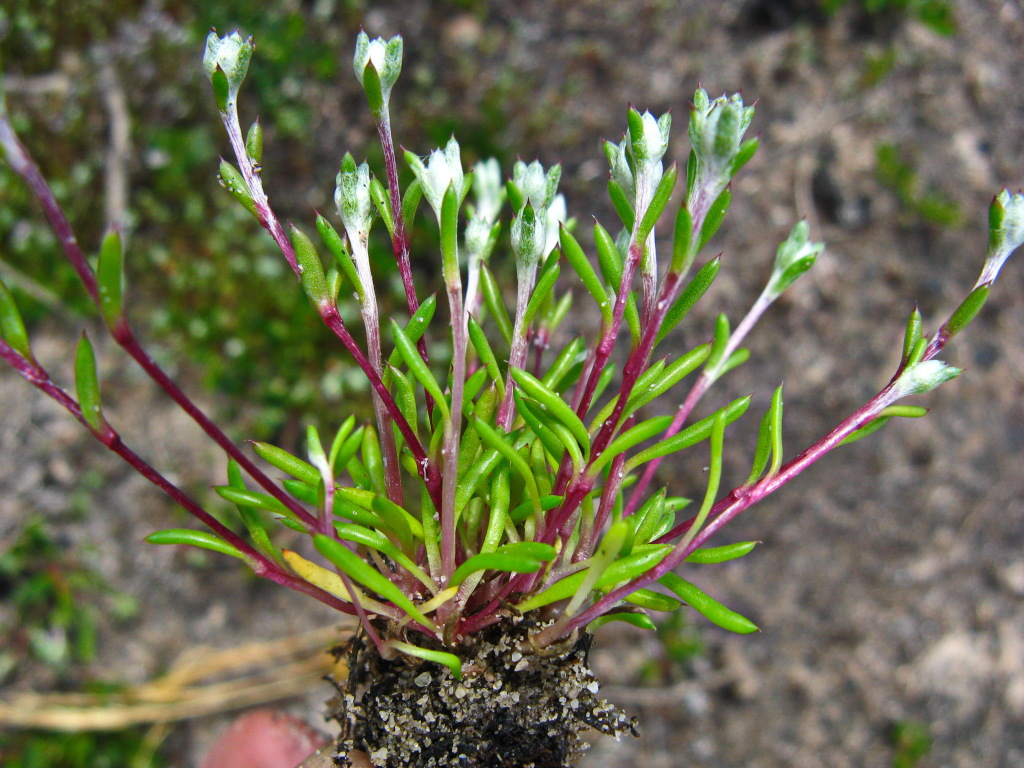Angianthus
Annual herbs (in Victoria), or perennial shrubs, simple or branched. Leaves mainly alternate but the lowermost pairs opposite, sessile, entire, the uppermost often with a hyaline apex. Inflorescence of compound heads; bracts subtending compound heads inconspicuous or the outer leafy bracts c. subequal to head; general receptacle a single major axis with capitula distributed evenly along it. Capitula discoid, homogamous, each subtended by 1–4 abaxial, predominantly hyaline bracts; capitular bracts usually 4, hyaline, with an opaque midrib, the 2 outer ones concave, the inner 2 flat; florets (1–)2(–3) per capitulum, bisexual; corolla tubular, (3–)5-lobed, yellow; style branches truncate; stamens (3–)5, anthers tailed. Cypselas glabrous or with short, twin-celled, mucilage-producing hairs; pappus of bristles or scales, or absent.
About 18 species, all endemic to Australia.
Short, P.S. (1999). Angianthus. In: Walsh, N.G.; Entwisle, T.J., Flora of Victoria Vol. 4, Cornaceae to Asteraceae, pp. 812–814. Inkata Press, Melbourne.
 Spinning
Spinning

